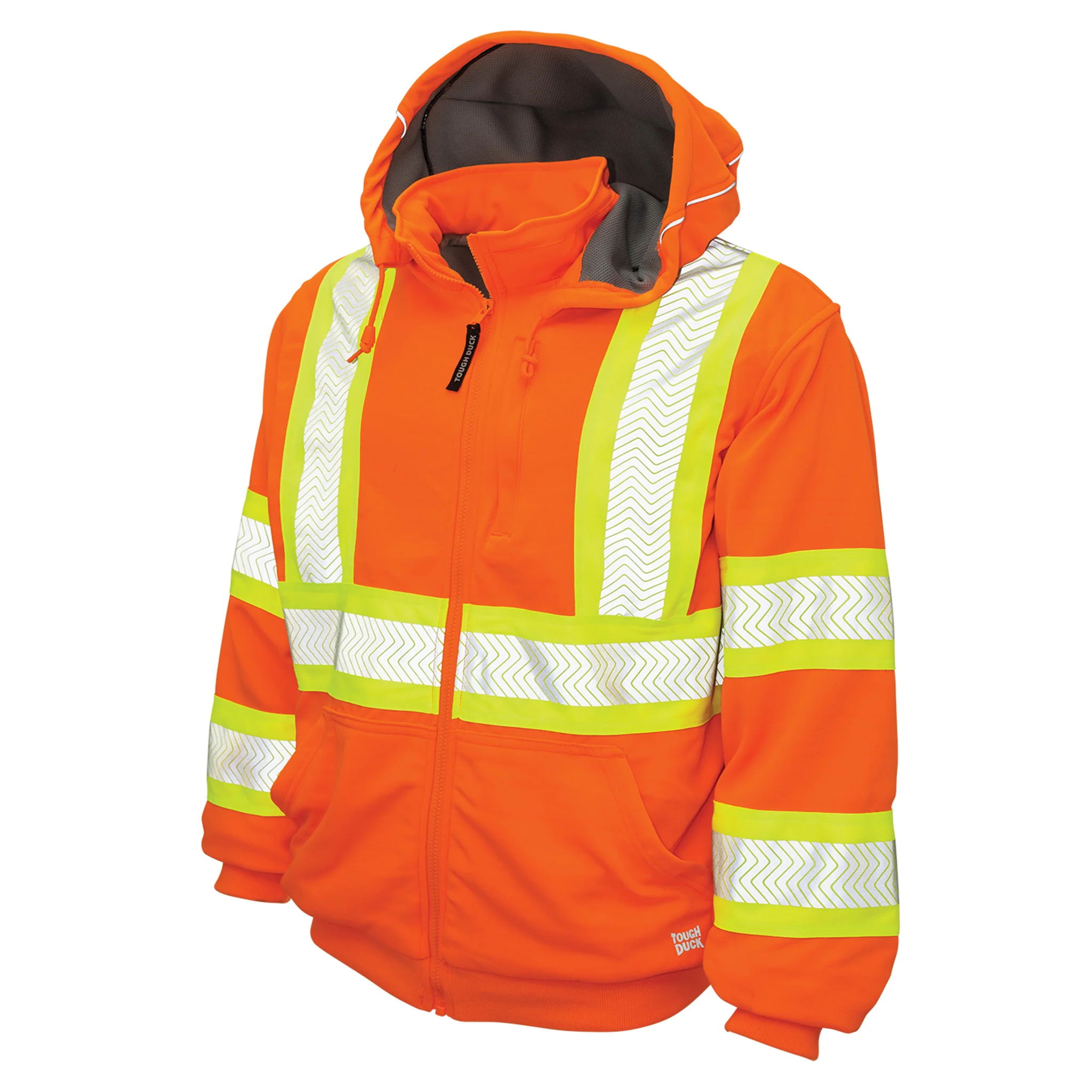Hi-vis safety clothing, short for high-visibility safety clothing, is a vital element of personal protective equipment (PPE) designed to ensure that workers are seen clearly in any environment, day or night. It plays a crucial role in accident prevention, especially in high-risk industries where poor visibility can lead to serious injuries or fatalities.
What is Hi-Vis Safety Clothing
Hi-vis safety clothing is typically made from brightly colored materials such as fluorescent yellow, green, or orange, combined with reflective strips that bounce light back toward its source. This combination significantly increases visibility in both daylight and low-light conditions.
Common types of hi-vis clothing include vests, jackets, pants, shirts, and overalls, often tailored for specific job roles and environmental conditions. These garments are used in construction, roadwork, traffic control, warehouse operations, railways, airports, and emergency services.
Why Hi-Vis Clothing is Essential
In environments where workers are exposed to moving vehicles, heavy machinery, or poor weather conditions, visibility is key to safety. Hi-vis clothing ensures that workers stand out from their surroundings, giving drivers and operators ample time to react and avoid accidents.
The goal is simple but critical: make workers easily seen before it's too late.
Key Features of Hi-Vis Safety Clothing
1. Fluorescent Fabric:
Fluorescent materials enhance visibility during the day by making use of ultraviolet light. These fabrics appear brighter than regular colors, especially in natural daylight.
2. Reflective Tape:
Reflective tape is sewn or heat-applied onto hi-vis clothing. It reflects light from sources such as vehicle headlights, making the wearer visible in dark or dim conditions.
3. Breathability and Comfort:
Modern hi-vis clothing is designed for comfort during long hours of wear. Many garments are made from lightweight, breathable fabrics to allow air circulation and reduce heat buildup.
4. Durability:
Quality hi-vis clothing is made to withstand tough environments. It resists tearing, water, and sometimes fire, depending on the job's specific hazards.
5. Multiple Styles and Fits:
Hi-vis garments are available in different fits and styles to suit various job functions. Options include insulated jackets for cold weather, moisture-wicking shirts for hot conditions, and waterproof outerwear for rain.
Industry Standards and Compliance
Hi-vis safety clothing must meet recognized standards to be effective and legally compliant. In the United States, ANSI/ISEA 107 is the main standard governing high-visibility safety apparel. It categorizes garments based on their performance class:
Class 1: For low-risk areas with minimal vehicle traffic
Class 2: For environments with moderate traffic and higher speed limits
Class 3: For high-risk areas with fast-moving vehicles or poor visibility conditions
Employers are responsible for assessing the level of risk in the workplace and providing appropriate hi-vis apparel based on these standards.
Benefits of Hi-Vis Safety Clothing
1. Accident Reduction:
Wearing hi-vis gear significantly decreases the likelihood of workplace accidents by making workers more visible to others.
2. Enhanced Safety Culture:
When a company equips its staff with proper hi-vis clothing, it signals a strong commitment to worker safety, boosting morale and team accountability.
3. Legal Protection and Compliance:
Providing ANSI-compliant clothing helps employers meet OSHA requirements and avoid penalties or liability in the event of an incident.
4. Quick Identification:
Hi-vis clothing also helps with identifying authorized personnel in restricted zones or during emergencies, improving site management and coordination.
5. Versatility Across Industries:
From roadside crews and airport ground staff to utility workers and event marshals, hi-vis gear supports safety across a wide range of professions.
Choosing the Right Hi-Vis Clothing
Selecting the appropriate hi-vis safety clothing depends on several factors including the nature of the work, lighting conditions, weather, and required mobility. It's important to choose garments that fit well, offer sufficient coverage, and are maintained in good condition. Dirty or faded hi-vis gear loses effectiveness and should be replaced promptly.
Conclusion
Hi-vis safety clothing is an essential part of workplace safety. It offers a simple yet highly effective way to reduce risk and protect lives in environments where visibility can mean the difference between safety and disaster. By investing in certified, well-designed hi-vis gear, employers demonstrate a proactive approach to safety, building a stronger, more secure workplace for everyone involved.

